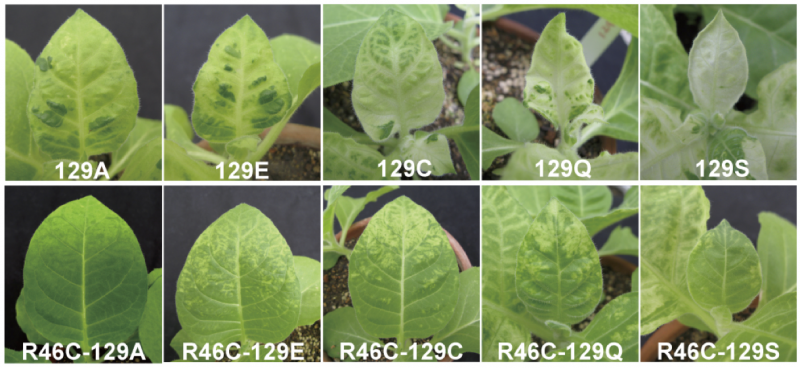Resarch Topics
Apr 1, 2022
Virus Virulence
How does plant virus induce the disease on host plants?
Most plant viruses induce diseases in their host plants, causing serious economic damage in agricultural cultivation. While disease symptoms can vary depending on the host species-viral strain specificity, understanding the mechanisms by which symptoms are induced is an important issue in plant virus studies. In addition to molecular biological studies that reveal the effects of viral infection on host gene expression, histological analysis of diseased cells with transmission electron microscopy can show the critical features underlying the symptoms. Therefore, both studies are essential for obtaining an overview of symptom development, from gene expression to phenotype. Our research focuses on using molecular biological and histochemical techniques to study the mechanisms responsible for inducing chlorosis, a representative symptom of plant viruses.
We are using tobacco plants and cucumber mosaic virus (CMV) as a model experiment. When infected with CMV, tobacco plants exhibit symptomatic chlorotic tissues and dark green islands intermingled within uninoculated systemic leaves. Using bioinformatics analysis (such as microarray or NGS), we are searching for tobacco genes that are deeply related to chlorosis induced by CMV infection. Transmission electron microscopy shows how changes in host gene expression affect cell organelles and leaf tissue formation during CMV infections.
